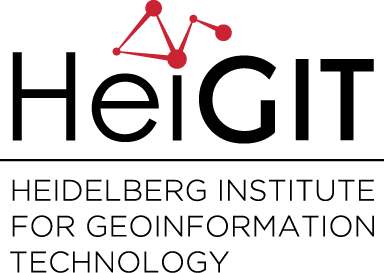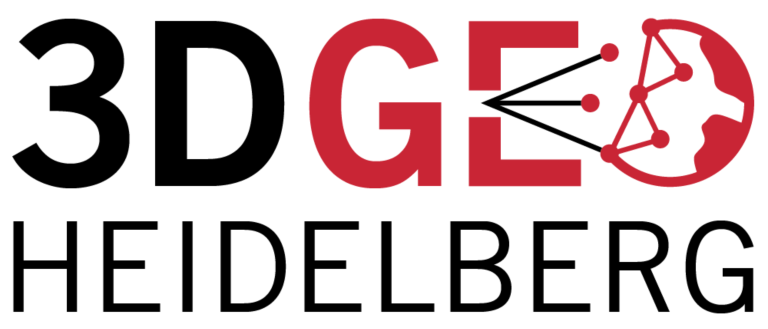Category: Research
-
CfP: “OpenStreetMap as a Multi-Disciplinary Nexus: Perspectives, Practices, and Procedures” Special Issue of the ISPRS International Journal of Geo-Information
Following the success of the Academic Track of State of the Map 2019, the track’s scientific committee – Dr. Yair Grinberger, until recently a member of the GIScience research group, Dr. Marco Minghini, Dr. Levente Juhász, Dr. Peter Mooney, and Dr. Godwin Yeboah – is organizing a special issue of the ISPRS International Journal of Geo-Information. The…
-
HeiGIT at International Dialogue Platform on Anticipatory Action
Next week, November 12-14th, the 7th International Dialogue Platform on Anticipatory Action is taking place in Berlin. The platform is organized by the German Red Cross (GRC), World Food Program, German Humanitarian Assistance, International Federation of Red Cross and Red Crescent Societies (IFRC) and the Climate Center of Red Cross and Red Crescent and brings…
-
New DFG project: IdealVGI – Deep Learning with OSM
Recently a new DFG project proposal was accepted to the GIScience Research Group Heidelberg within the DFG priority programme VisVGI (Volunteered Geographic Information: Interpretation, Visualisation and Social Computing” [SPP 1894]). It is joint collaboration project together with Prof. Begüm Demir from TU Berlin. IDEAL-VGI: Information Discovery from Big Earth Observation Data Archives by Learning from…
-
Winner of the 2019 Climathon Heidelberg
Over the last few days, Heidelberg’s first climathon event took place at EMBL, which was part of the global Climathon. The event ran from 25th-27th October 2019 with a 24 hour hackathon taking place on the 26th-27th. During the 24 hours developers, entrepreneurs, designers and students came together and worked as teams on 5 innovative…
-
MS Wissenschaft beendet Tour zur Künstlichen Intelligenz – aber weiter geht es im Web – auch mit unserem Exponat zu Trainingsdaten für Satellitenbilder
Gerade beendete die MS Wissenschaft ihre Tour durch 31 Städte zwischen Berlin und Wien in diesem Wissenschaftsjahr zum Thema “Künstliche Intelligenz“. 85.000 Menschen – Schulklassen, Familien und Interessierte aller Altersklassen – besuchten die Ausstellung zum Thema lernende Computersysteme an Bord des Wissenschaftsschiffs. Zu den Besonderheiten der Ausstellung zählten die zahlreiche Dialog- und Mitmachangebote an Bord.…
-
PermaSAR project concluded with publication of final report
With the publication of the final report, the PermaSAR project is concluded. In the blink of an eye regarding timescales of permafrost monitoring, research within the project period covered diverse methods and analyses around the topic of permafrost and related thaw subsidence in Arctic tundra landscapes. The report (in German) provides all details on the…
-
Einladung zum Beta Test der meinGrün App
Beim Konsortialtreffen letzte Woche haben wir die erste Beta Version der meinGrün App fertiggestellt. Jetzt benötigen wir Grünflächen-Enthusiasten, die mit uns zusammen die App testen, um sie weiter zu verbessern. Diesen Samstag findet unser erstes Test-Event statt: WO: Volkshochschule Heidelberg in der Cafeteria – Bergheimer Straße 76 WANN: diesen Samstag, 26.10.19 von 10:30 Uhr bis…
-
Viele Daten- Welcher Nutzen? HeiGIT Workshop mit BBK und DLR bei der Fachtagung Katastrophenvorsorge 2019
Am 28. und 29. Oktober findet in Berlin die jährliche Fachtagung Katastrophenvorsorge statt. In diesem Rahmen treffen sich erneut Expertinnen und Experten aus dem (inter) nationalen Katastrophenmanagement um sich zu neuesten Entwicklungen, Ideen und auch Herausforderungen in der Katastrophenvorsorge auszutauschen- zur Umsetzung des Sendai Rahmenwerks in Deutschland. Wie im vorherigen Jahr, wird auch HeiGIT die…
-
40. Wissenschaftlich-Technische Jahrestagung der Deutschen Gesellschaft für Photogrammetrie, Fernerkundung und Geoinformation (DGPF)
Die Anmeldung für die DGPF-Jahrestagung 2020, 4.-6. März 2020 in Stuttgart, ist ab sofort hier möglich: https://www.conftool.net/dgpf2020/index.php?page=login Gruppen von Studis ab 10 Personen bekommen einen Sondertarif! Deadline für die Einreichung von Beiträgen ist am 31. Oktober 2019 – also bald. Wir würden uns über spannende Beiträge im Bereich der Geoinformatik für die Sitzung des AK…
-
HeiGIT support for Humanitarian Village and Mapathon at Humanitarian Congress in Berlin 2019
On October 17/18th the Humanitarian Congress is organized in Berlin by Médecins Sans Frontières/Ärzte ohne Grenzen (MSF), Médecins du Monde/Doctors of the World (MdM), German Red Cross (GRC) and Berlin Chamber of Physicians. For more than 20 years, this congress brings together actors from the medical and humanitarian, governmental, media, and research world. These come together…
-
Brownbag Presentation by Jennings Anderson (University of Colorado Boulder) on OpenStreetMap data analysis
We cordially invite you to a Brownbag presentation by our Guest Researcher Dr. Jennings Anderson! When? Tuesday, 8/10/2019, 1-2.30 pm Where? Seminar room 15, INF 348 Jennings is a postdoctoral researcher at the University of Colorado Boulder exploring new approaches to analytical infrastructures for big, peer-produced geospatial datasets, specifically OpenStreetMap. His dissertation work involved designing…
-
Using OSM data to generate scenes for LiDAR simulations in HELIOS
A new tutorial for the 3DGeo‘s LiDAR simulation software HELIOS has been posted to the repository’s wiki page. It shows a simple way to generate scenes of real landscapes including building and vegetation models as well as terrain from NASA JPL’s SRTM data. When applied to OSM data in the city of Vienna, the obtained…


